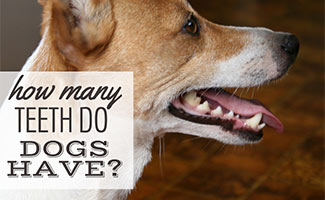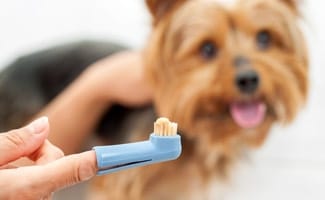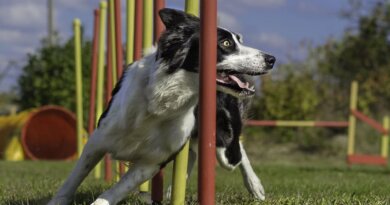How Many Teeth Do Dogs Have? – CanineJournal.com
To sustain this free service, we receive affiliate commissions via some of our links. This doesn’t affect rankings. Our review process.

Article Overview
How Many Teeth Do Dogs Have?
Dogs will have two sets of teeth in their lifetime. Much like humans, they have a set of deciduous (baby) teeth and a set of permanent teeth, also called secondary teeth. However, dogs have more teeth than humans in each set, with 28 baby teeth and 42 secondary teeth.
Types Of Teeth
Incisors

Canines
Next to the incisors are the long pointed teeth known as the canines. Dogs use these teeth for shredding and tearing meat. They also bite and lock onto something your dog wants to hold on to like a bone or chew toy. There are four permanent canines, two on top and bottom.
Premolars
Premolars come in behind the canines. These are sharp teeth, used to chew and shear food. If you notice your dog chewing something on the side of his mouth, he’s probably using his premolars. There are 16 premolars in most adult dogs’ mouths, eight in both the top and bottom.
Molars
In the very back of the mouth are the molars. These flat, strong teeth grind and chew more hearty foods. You’ll see four molars on top and six molars on the bottom in most adult dog mouths.
Wolf Teeth vs Dog Teeth
Dogs and wolves have a lot in common. What’s interesting is how their teeth are similar and different. Wolves and dogs have the same amount of teeth, 28 baby and 42 secondary, and the same types of teeth. However, wolf teeth are much longer, and their jaws tend to be stronger.
Guide To Dog’s Teeth Infographic
When Will My Puppy Lose His Teeth?

- Two Weeks To One Month: Teething begins as baby teeth start to erupt, starting with incisors and followed by premolars, molars, and finally canines.
- Five Weeks To Two Months: All 28 baby teeth will be in, and by the two-month mark, your puppy may start to lose his baby teeth.
- Three To Four Months: By the three to four-month mark, the baby teeth start to fall out more quickly. The permanent teeth begin to erupt almost immediately after the baby teeth fall out. The loss of baby teeth and the eruption of permanent ones follow the same order as the baby teeth eruption pattern: incisors, premolars, molars, and then canines.
- Six Months: At this point, all the baby teeth should be gone. It’s vital to take your dog to the vet for a tooth check to ensure everything looks good and there are no issues.
 How Do I Care For My Dog’s Dental Needs?
How Do I Care For My Dog’s Dental Needs?
Caring for your dog’s teeth is part of the responsibility of owning a dog, and they need your help to keep them clean and healthy. Brushing your dog’s teeth is the most important (and least expensive!) step you can take and we can help you with the details on how to do it, how often, and the tools you’ll need to get started.
Learn to effectively brush your dog’s teeth
You might also consider dental chews, rawhide bones, or safer rawhide alternatives to help keep your dog’s teeth healthy and strong, but you’ll need to make sure you understand how to use them safely.
How Strong Are My Dog’s Teeth?
Dog teeth are powerful, but they’re not indestructible. Like people, dogs can break their teeth by chewing on tough things or from an injury. However, dogs are much less likely than humans to get cavities because their saliva does a better job preventing them.
The biggest concern you have to consider with your dog’s teeth is gum disease. Dogs can get gingivitis, an infection of the gums that can progress to periodontal disease if left untreated. This disease is a chronic infection of the gums and bone in the mouth. Without strong gums and bone, healthy teeth can fall out, and the presence of gum disease increases the risk of heart disease and diabetes.
This one-minute video from Health Care For Pets shows you how you can tell if your pet has gum disease.
Preventative Care For A Healthy Dog
Learning about your dog’s teeth can help you provide the best care possible for your furry friend. And a healthy mouth only adds to their overall health. Because some dental care is preventative, some pet insurance wellness plans include teeth cleaning in their covered procedures. Our experts review how not to break the bank with pet wellness plans so you can decide if they might be right for your family.
Have you had any issues with your dog’s teeth?






india pharmacy mail order https://indiapharmfd.com/# – online shopping pharmacy india